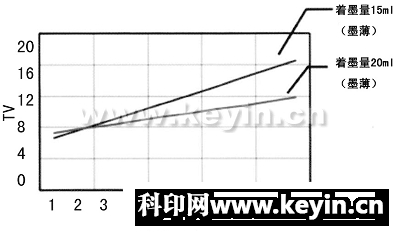Early FM screen printing, there have been only printed 10,000 copies where the ink viscosity occurs the blanket, which is due to the smaller amount of ink on the inking FM screen printing roll and the blanket, when ink unbalance It is easy to cause excessive emulsification and precipitate water soluble components.
In February 2005, Web World New ADVAN developed by a company avoided the adhesion of the blanket to the W-CLS Method (see Figure 5).

Figure 5 W-CLS technology
W-CLS technology uses a new high-branched, low-polarity resin that prevents the ink on the ink roller from eluting water-soluble components while suppressing the viscosity of the ink (soluble component) that has spread to the non-image portion. .
Therefore, it is possible to prevent the rubber sheet from sticking to the ink by preventing the dissolution of the water-soluble component, suppressing the excessive emulsification of the ink, and suppressing the viscosity of the non-image portion ink.
Anti-back roller sticking ink (for offset printing , sheetfed press)
The rear roller sticking ink is completely different from the blanket sticking ink, which refers to the ink sticking phenomenon on the blanket. That is to say, the first printed ink is taken to the blanket of the rear drum, and if the viscosity is high, it is retained on the blanket, thereby affecting the image on the rear drum. The rear roller sticking ink is more common in recycled paper, and mainly occurs when black and blue ink are printed. Generally, paper with high oil absorption and fast fixation, the ink transferred to the paper surface is easily retained on the blanket of the rear drum.
In addition, the ink tends to promote solvent detachment due to an increase in temperature of the printing press, and the viscosity of the ink is increased. Fig. 6 shows the relationship between the amount of ink and the stability (TV change value in 10 minutes). When the amount of ink is large (the thickness of the ink layer on the ink roller is thick), the change in viscosity is small, indicating stability.

Figure 6 Relationship between ink quantity and stability
Therefore, when performing FM screen printing, inks with better stability should be selected.
In addition, like the ink sticking to the rear drum, if there is a high viscosity ink on the blanket, the paper is not easily detached from the blanket, thereby affecting the paper feed. This situation must be avoided by the stability of the ink.
Over-emulsified, ink with less ink roller retention (for offset printing, sheetfed presses)
For FM screen printing, because the amount of ink is small, once the amount of water is too much, it will cause over-emulsification. After the emulsified ink, the elasticity will change, the fluidity will be impaired, and the ink transfer between the ink rollers will not be smooth, eventually leading to the water fountain roller. The ink retention phenomenon occurs in places such as the water roller, the inking roller, and the outside of the paper feeding of the blanket. Fig. 7 shows that the thickness of the ink film on the ink roller changes correspondingly with the change in the amount of water supplied.

Figure 7 The thickness of the ink film on the ink roller changes correspondingly with the change of the water supply amount.
Good drying and stable ink (for offset printing presses)
As mentioned above, for FM screen printing, it is very important to improve the stability of the ink. In the solvent of the ink, as long as the low boiling point solvent is selected, the drying property can be improved. If a high boiling point solvent is used, the drying property is improved. decline. In addition, if the ink is stabilized on the machine, it is better to use a high boiling point solvent. Therefore, in order to make the ink both dry and stable, it is necessary to well balance the balance between the resin and the solvent. The aforementioned W-CLS technology is also one of the means.
Although the management using CMS (Color Management System) has been popularized, the composite printing process, such as the ICC profile related to paper and machinery, has not yet reached a stable "standardization". It is hoped that printers and printing materials manufacturers will jointly promote the standardization of printing under the premise of improving technology and mutual cooperation.
Thermal CTP and FM screening are symbols of the digitalization of the printing industry and will be rapidly popularized in the future. In order to develop large-scale, it is the key to improve the management of the entire printing project, and look forward to the high-precision "printing standardization".
White Office Desks with Drawers,Steel Office Table Price,Metal Desk for Sale
LUOYANG SHIDIU IMPORT AND EXPORT CO., LTD , https://www.ybshidiu.com